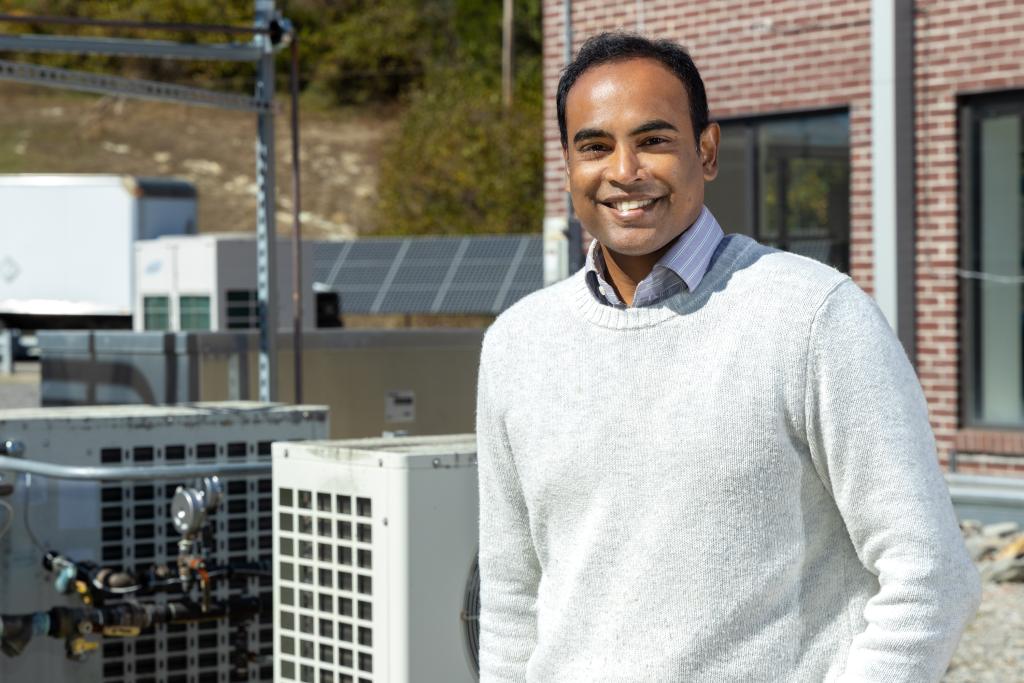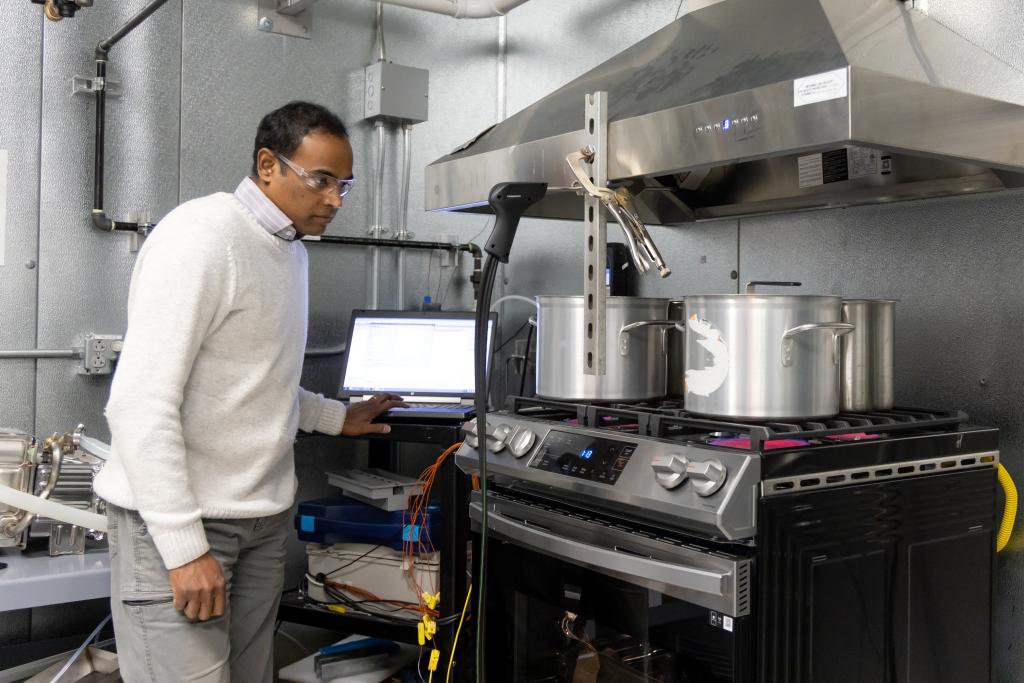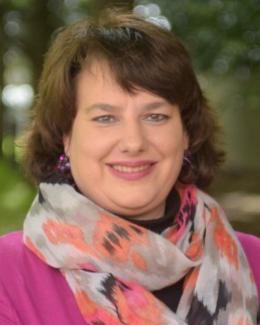
After two decades working as a chemical engineer for commercial energy companies prior to joining the Department of Energy’s Oak Ridge National Laboratory, Praveen Cheekatamarla has experienced firsthand the complexities, roadblocks and challenges that can arise when trying to bring new technologies to the marketplace. He has celebrated breakthrough success and also experienced frustration when an invention doesn’t lead to rapid commercialization.
“When you’re performing scientific research, you have to have a good deal of patience,” Cheekatamarla said. “It can sometimes take decades to see the results of your work on the shelves for purchase.”
This steady focus led to what Cheekatamarla said is the highlight of his career to date – the spearheading of the development of fuel cell technologies that enabled the commercial deployment of more than 700 fuel cell remote power generators in North America. He tested the product for operation in extreme environments ranging from mountain tops in Alaska to desert regions in the southern U.S. and Mexico.
“We demonstrated the use of an advanced solid oxide fuel cell, or SOFC, as a power source for Department of Defense applications,” Cheekatamarla said. “Operating an SOFC commercial generator on desulfurized jet fuel opened the door to advancing the use of low-carbon fuels in military equipment.”
While this was an achievement years in the making, Cheekatamarla said it still wasn’t taking off the way he had wanted.
“Eventually my vision was to see these generators in appliance and equipment stores across the U.S., so that anyone could buy one and put it in their homes for use,” he said. “But, to make units in the tens and hundreds of thousands, you have to justify cost with demand and that volume demand wasn’t there yet.”
Cheekatamarla said he first started investigating the use of SOFCs as power sources 16 years prior to his eventual success. Now, the technology has matured and the appetite for low-carbon technologies has increased tenfold, too.
“Today, everyone in research and product development is talking about the need to develop energy efficient, low-carbon equipment that can reduce greenhouse gas emissions and take some of the pressure off the electrical grid, while delivering powerful performance,” he said.
A necessary pivot
The increased emphasis on transitioning to clean energy sources coupled with his desire to experience research outside of industry and academia is what led Cheekatamarla to ORNL in late 2019. Needing a career shift, he accepted a position as a senior researcher working in a new research area within the Multifunctional Equipment Integration group that would allow him to utilize the capabilities of DOE’s Building Technologies Research and Integration Center at ORNL. The research position would also call upon his expertise in hydrogen technologies, hybrid power systems, adsorbents, functional materials, ceramics, energy modeling, fuel, combustion and catalysis. These skills would support the development of energy efficient, renewable energy and decarbonization technologies that could be deployed in building equipment.
Carbon reduction is particularly relevant for buildings, Cheekatamarla added, especially in residential buildings where the focus is on electrification to offset carbon-based fuels, such as natural gas. This is because the U.S. currently has approximately 130 million buildings that consume almost 40% of the nation’s total primary energy and 75% of the nation’s electricity. Reducing that energy consumption by developing new technologies and tools to enable grid-interactive efficient buildings will be essential to reducing overall energy consumption.
“For commercial and industrial buildings, they’re not that easy to electrify because you’re dealing with large, multiple story buildings and these exist in cities where the infrastructure is already established to provide power in a certain way,” he said. “My job is to take my knowledge, skillset and whatever resources are available to me and apply that to all buildings; the lab environment allows me to do those experiments, to see what’s truly feasible.”

Collaborating for impact
Growing up in southeastern India, in the suburbs of Hyderabad, a major city for technology, Cheekatamarla watched the emergence of some of the biggest tech names in the country such as Amazon, Google and Apple. The city experienced rapid growth in a short amount of time, largely, he said because of the collaborative nature of the area and the openness to new growth.
“I saw what can happen when you take advantage of opportunities; India is a huge market for engineers, young engineers, too, because almost 66% of the population is below the age of 35,” Cheekatamarla added. “It was a certain synergy of resources working together that’s even led to Apple ultimately building a manufacturing plant there.”
Driven by that technology boom, Cheekatamarla saw chemical engineering as the pathway to making his own mark in the field. He completed an undergraduate degree in India but soon left to complete his doctoral degree at the University of Alabama in Tuscaloosa, where he continued as a research assistant developing an auxiliary power unit that integrates hydrogen in heavy-duty trucks. Further work as a postdoctoral research fellow followed at Washington State University where he continued conducting research on hydrogen generation and purification from transportation fuels.
Those years spent investigating hydrogen’s potential as an energy source soon came into play at ORNL, when one of his first projects focused on the use of hydrogen in a cookstove. Cheekatamarla worked with a gas utility and appliance partner to develop a prototype cooking appliance that uses a wide range of blends of hydrogen and natural gas, offering an alternative to safely reduce emissions that contribute to the nation’s carbon footprint. The prototype began as a single module that utilized tailored thermal and fluid transfer characteristics to enable operation at moderate temperatures in a safe and clean manner.
The cookstove operated with a flameless burner that relied on heterogeneous oxidation – an approach that distributes energy through infrared radiation and over a larger surface, allowing for lower temperature options than conventional burners. Within a year of the concept development, Cheekatamarla scaled it up to a residential appliance with integrated hydrogen-compatible burners that could operate on both natural gas and hydrogen.
“We proved the viability of the concept and it’s been tested in a realistic environment, and now we are working on projects to extend its application in industrial heating and drying unit operations,” he said. “The commercialization feasibility is there, so one day soon maybe you can buy it in a Lowe’s or Home Depot.”
While Cheekatamarla’s eye is on research and development for deployment and commercialization, he’s also not losing sight of what is needed to push forward the energy transition. He’s the author of several high-impact scientific journal papers, as well as a book that looks at the technical and economic impacts of innovations as the U.S. and the world focuses on reducing carbon emissions and relieving the strain on the electrical grid.
“There’s no one solution, no one fix for this,” Cheekatamarla said. “There are many paths forward; it’s important to put them all in perspective so that we can continue to move steadily in the right direction.”
UT-Battelle manages ORNL for DOE’s Office of Science, the single largest supporter of basic research in the physical sciences in the U.S. The Office of Science is working to address some of the most pressing challenges of our time. For more information, please visit https://energy.gov/science.



